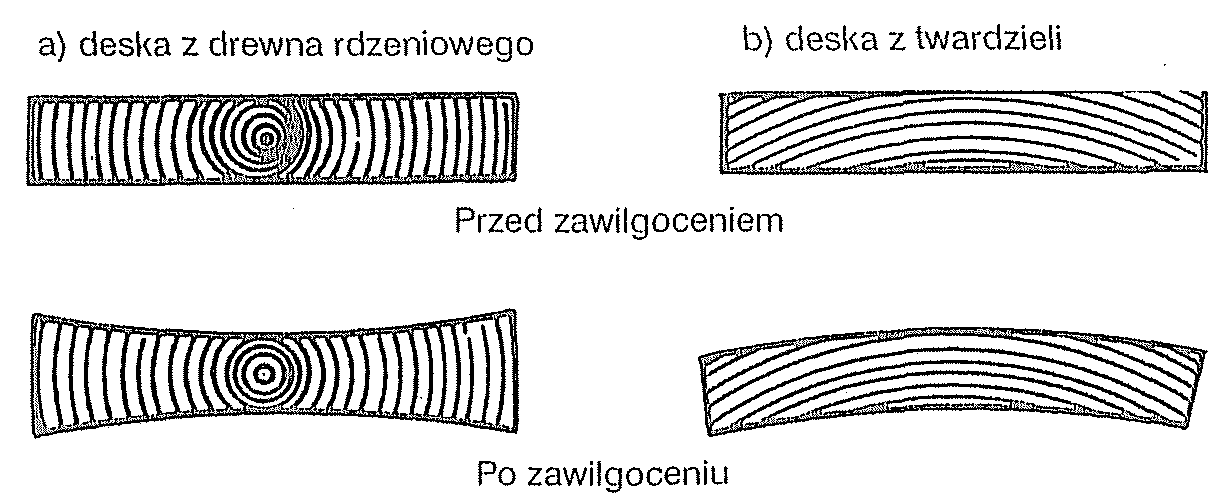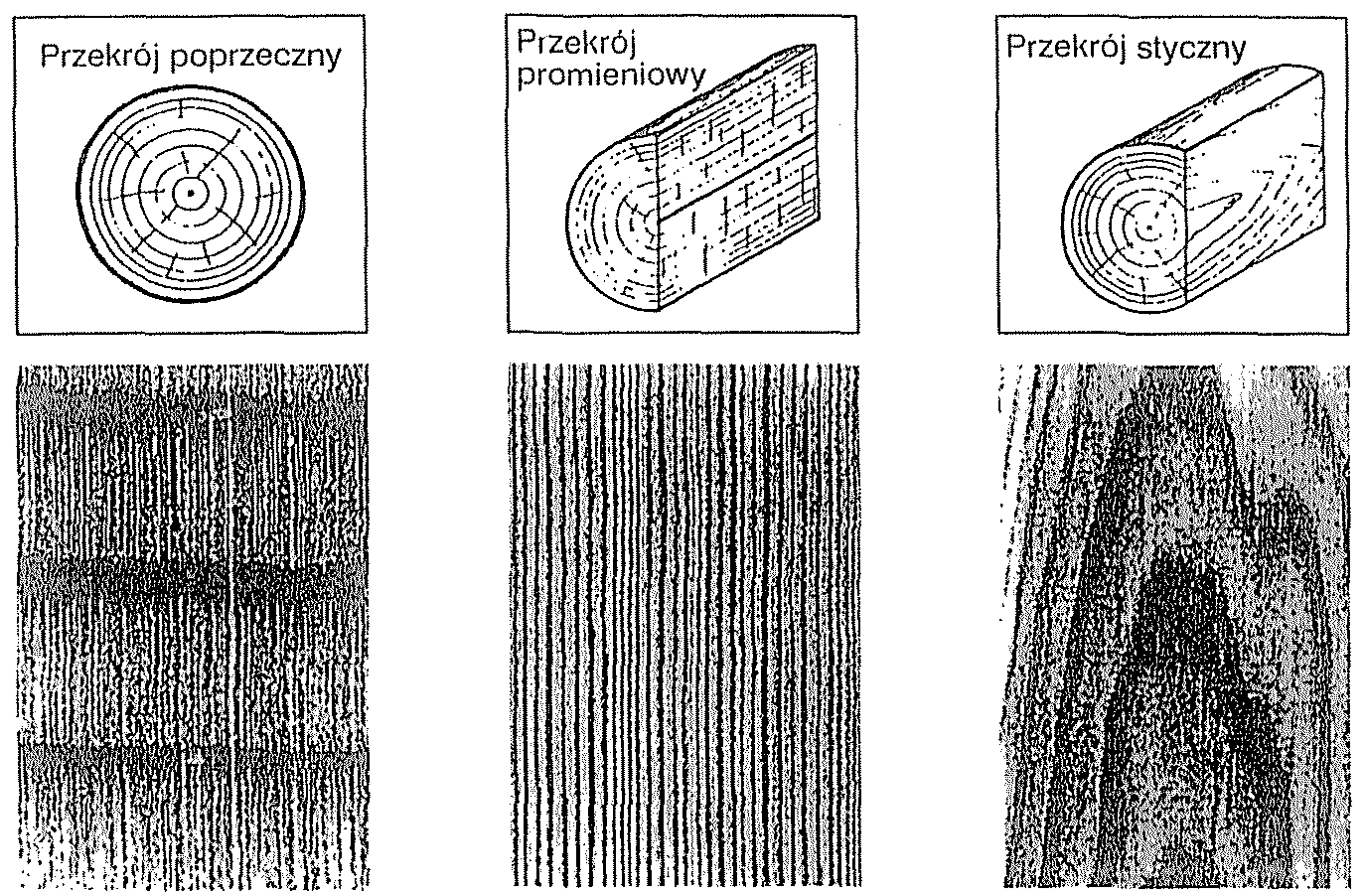Solid wood
What humidity the wood can have when coating is applied? While painting, coniferous wood in the external elements should have a humidity of max. 12%. When painting interior parts, the wood humidity may be max. 10%, and in rooms with central heating it should not exceed 8%.
How can you reliably determine the moisture content of the wood? The wood moisture can be determined by drying (heating) in thermal chambers. Water loss due to heating, expressed as a percentage of the dry weight of the wood, is determined by its humidity.
Wood moisture (%) = loss of moisture (g) / weight of dry wood (g) • 100%
Electrical measuring instruments determine the electrical resistance of the wood. The resistance is all the greater, the drier the wood is. The obtained values are processed in moisture measuring instruments (in the hygrometer) and converted to a percentage. In most devices, it is necessary to set the air temperature and the class of the tested wood.
Two measuring head pins are used for the measurement, which is pressed into the wood to the depth 5 mm. There are also instruments that measure the moisture content of the wood on its surface.
Please sketch the deformation of the boards caused by moisture:
a) core wood boards
b) hardwood boards
 What cross-sections are distinguished in solid wood?
What cross-sections are distinguished in solid wood?
Solid wood distinguishes between transverse and longitudinal sections.
Depending on the direction of the cut, in the longitudinal section, a radial and a tangential section are distinguished.
The shrinkage of wood drying depends, of course, to a large extent on its species and is on average:
a) contraction in length 0,02-0,09%;
b) radial contraction 3-6%;
c) tangential contraction 6 -12%.
What substances contained in wood can:
a) delay or prevent the drying of varnish or lacquer paint?
b) cause discoloration of the coating?
a) waxes, fats, phenols and tannins can delay, and even prevent the paint coatings from drying out;
b) the presence of dyes in the wood may cause discoloration of the coating.
